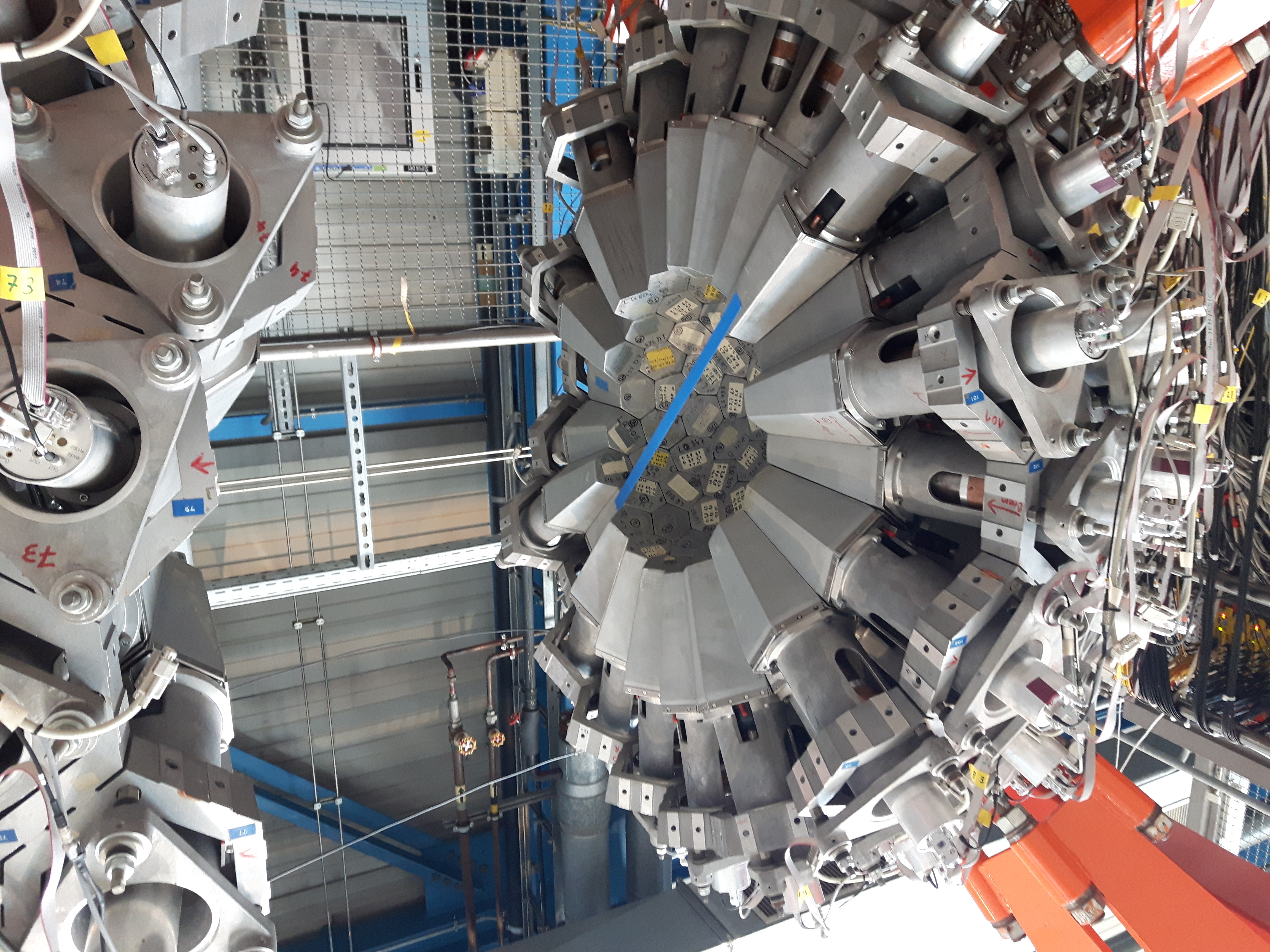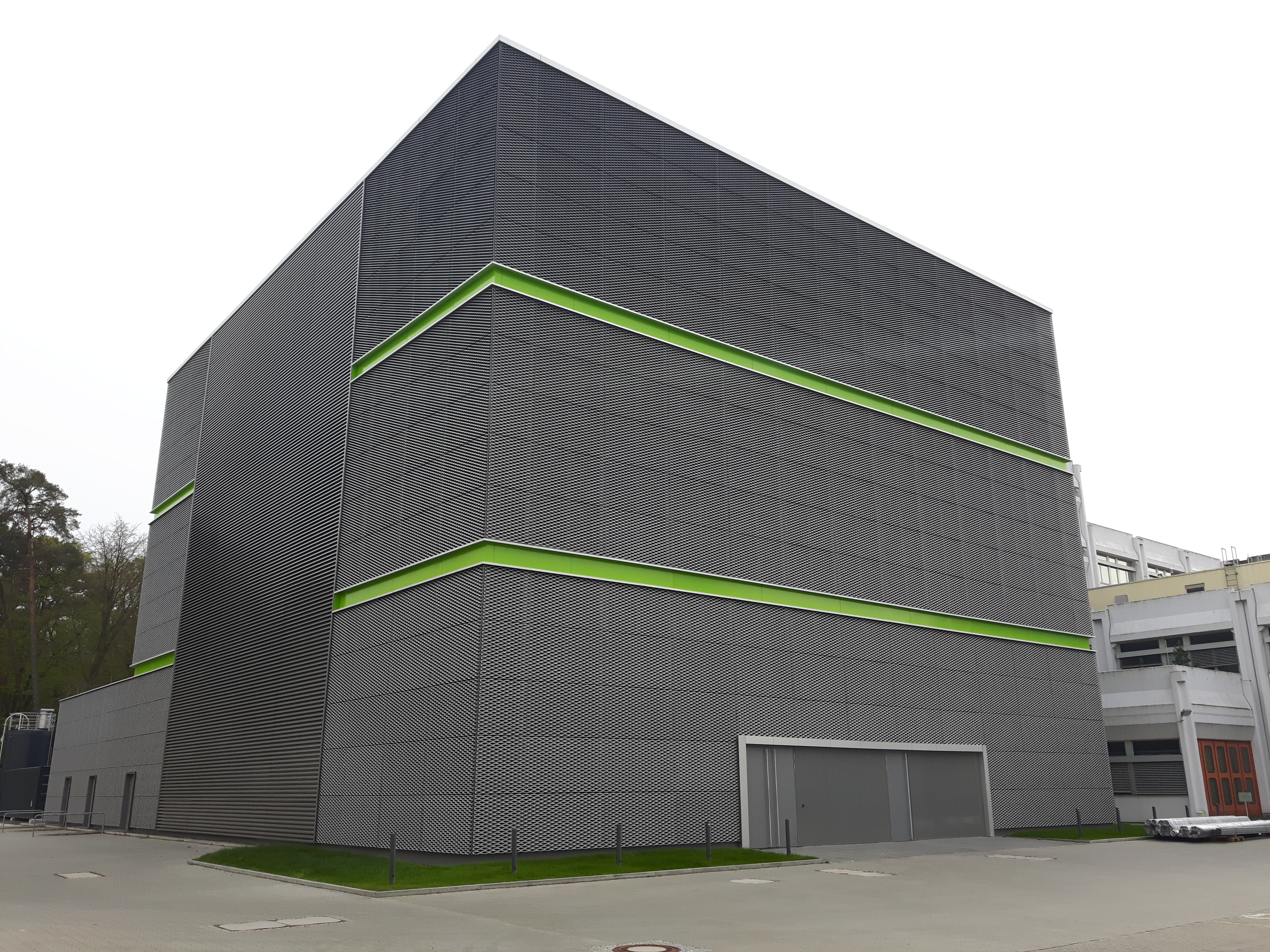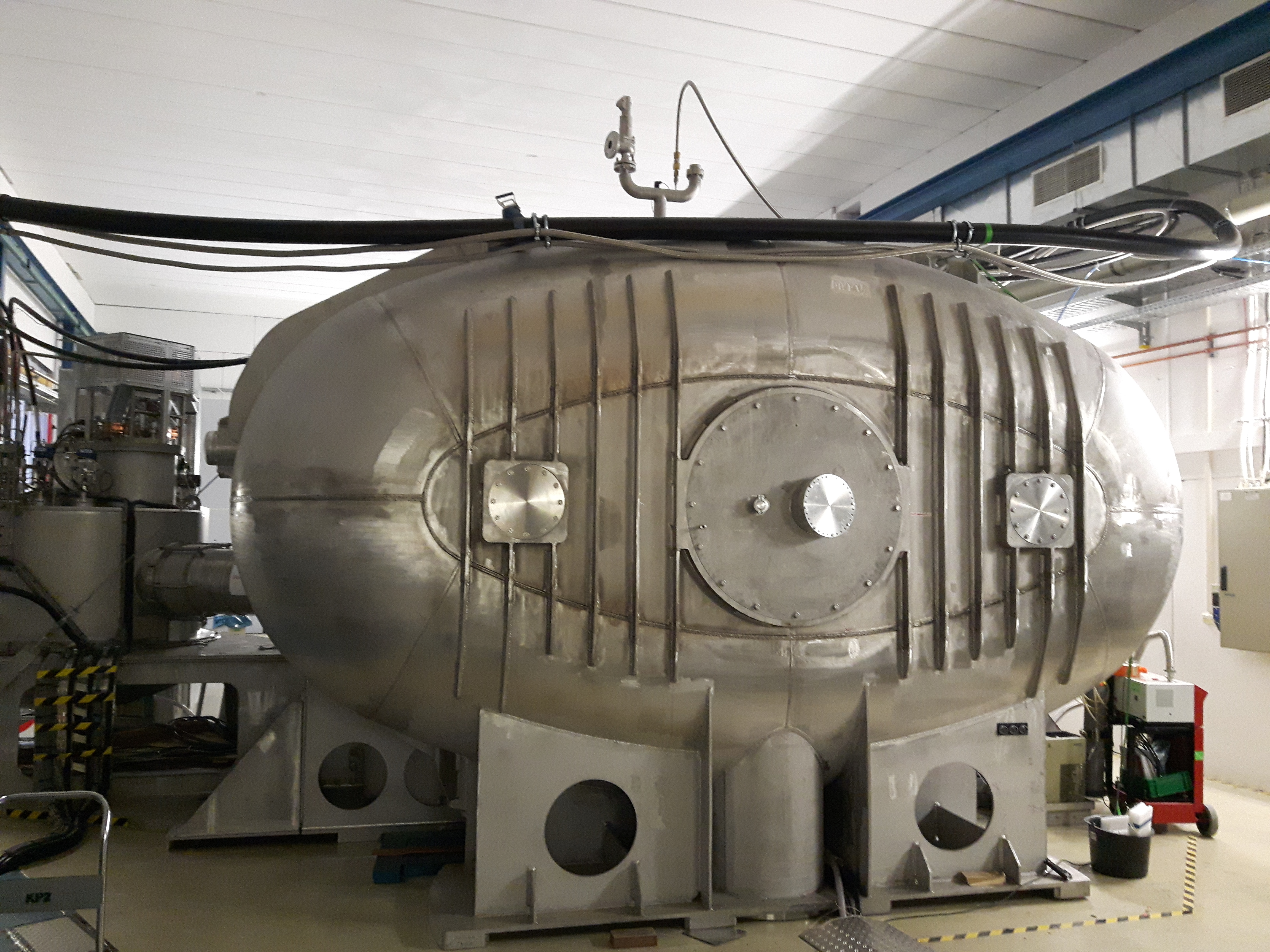
I visited the lab on April 25th and 26th to give a seminar there, invited there by my recent acquaintance, prof. Peter Braun-Munzinger. You know, this is from my series of talks titled "Extraordinary Claims: the 0.000029% Solution", where I discuss the five-sigma criterion in HEP and tangentially publicize my recent book, "Anomaly!". I was extremely happy of my visit, as my host Anton Andronic, a researcher at GSI, planned everything perfectly and gave me a tour of the lab as well as a short walk through the town of Darmstadt, which is surprisingly full of interesting things to see.
The laboratory is immersed in a country scenery of woods and lakes, but is a very active place in continuous expansion. The plan is to build a new accelerator for heavy ions, FAIR (Facility for Antiproton and Ion Research), which will include a new synchrotron, a super-fragment separator, and many other rings for nuclear matter and antimatter studies. These devices will become operational in 2025, and construction is in full swing - the civil engineering is quite complex per se, as the soil is sandy and unstable, so the accelerator complex, which stands at ground level, must be sustained by 1-meter concrete columns that dig deep in the ground.
I was able to see and touch many pieces of hardware while touring through the complex. Just like an enthusiastic amateur, I took several pictures - I think that even if you do not actually understand what these things are and what they do, they're amazing to watch. Take for instance this crystal ball, made by two half-spheres of photomultiplier-scintillator bars:

Or take this giant "green cube" which hosts a supercomputer centre:

This reaction chamber is also quite amazing to see, isn't it ?

My host Anton explained to me many details of the research that is being done at GSI. As a member of the ALICE collaboration, the focus of his research is rather the study of quark-gluon plasma in LHC collisions (he is working at charge particle multiplicity distributions and J/Psi decays to electron pairs), but we rather discussed the physics of production of very heavy nuclei, their stability, and the experimental methods to study them.
One thing I was very interested to visit was the cancer irradiation facility they have at GSI. They treated several thousand patients with Carbon ions (Carbon has a very sharp energy deposition in matter - its "Bragg peak" is quite narrow - so by tuning the beam parameters you can irradiate tumors residing deep down organic tissue without harming the surrounding organs), but the facility is not used anymore. Anton explained to me that there's an "ethical" aspect of deciding whether to treat patients with proton beams or carbon beams: the latter are five times more expensive and complex, so you need to choose whether to treat five times fewer patients with a better device or what.
In the end nuclear physics is quite a different topic from high-energy particle physics, but the means of investigation of nuclear states are pretty similar. We are all "spectroscopists" - we look for energy and mass spectra in search for bound states of matter in exotic configurations. So my seminar was arguably interesting to the audience, as it focuses more on the methods rather than on the physics. Or so it seemed to me. As for me, my visit was definitely worth, as I learned a few things and made friends with a very special colleague. Thanks Anton!
----
Tommaso Dorigo is an experimental particle physicist, who works for the INFN at the University of Padova, and collaborates with the CMS experiment at the CERN LHC. He coordinates the European network AMVA4NewPhysics as well as research in accelerator-based physics for INFN-Padova, and is an editor of the journal Reviews in Physics. In 2016 Dorigo published the book “Anomaly! Collider physics and the quest for new phenomena at Fermilab”. You can purchase a copy of the book by clicking on the book cover in the column on the right.




Comments